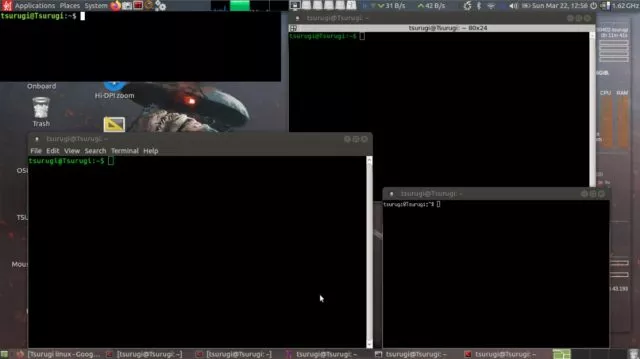

- #INSTALL DDRESCUE GUI IN KALI INSTALL#
- #INSTALL DDRESCUE GUI IN KALI DRIVERS#
- #INSTALL DDRESCUE GUI IN KALI SOFTWARE#
- #INSTALL DDRESCUE GUI IN KALI TRIAL#
Hi, all, I am new to the forum and quite new to Linux, I am running Mint and Kali from a USB drive, all is going well with with the software and I am starting to find my way around it. On boot-up a message box indicates that hardware acceleration is not enabled and higher than normal processor usage may occur.Īny assistance / direction, etc.
#INSTALL DDRESCUE GUI IN KALI DRIVERS#
This doesn't appear to be working 100% although Linux 17.1 boots the nvidia hardware drivers do not appear to be available even though I downloaded these and they are on the same usb. My intent was to create a bootable usb drive for Linux that also contained my required hardware drivers, etc.
#INSTALL DDRESCUE GUI IN KALI INSTALL#
Can anyone explain what is the purpose of this sub-directory? The software I used to create the usb bootable drive and install Linux to is 'Universal-USB-Installer-1.9.5.9'. and also as 4.0 GB 'file' named casper-rw. This shows up as a ~1.4 GB sub-directory titled casper. On the usb I see a 4.0 GB area highlighted in G Parted but not accessible from the Linux file manager.
#INSTALL DDRESCUE GUI IN KALI TRIAL#
I have roughly one year's experience with Linux Mint 13 which I chose because it so closely resembled Windows XP.įollowing instructions on-line I attempted to create a bootable USB drive (32GB Sandsik extreme) with Linux 17.1 installed to enable a trial before attempting a permanent install beside windows 7 on a new computer with Win7 prof. If I try to add a line to /etc/fstab, for example, I find that I do not have a directory called 'fstab', only 'fstab.d' and that is empty. 'mount' then once again confirms that sdb1 does not feature in the list of mounted devices.Ĭan someone offer any suggestions? I have read one or two of the other posts on this topic but none of the details match my problem too well and I did not understand some of the replies. If I try something like 'mount -t /dev/sdb1 /mnt/xdisk', where xdisk is a directory I have been told to create, then I am presented with a prolix description of 'mount's syntax, most of which leaves me bewildered. No error messages or other output resulted and the command prompt was immediately redisplayed but 'mount' then failed to show that the external drive had been mounted. 'mount' objected without hesitation to my early mistakes but “mount -t dev/sdb” was instantly accepted. I clearly do not understand the syntax of the mount command or have failed to meet some other requirement. My attempts to mount the external disk have all failed, however. It lists /dev/sb1 as the bootable Linux partition, /dev/sdb2 as the Extended partition and /dev/sdb5 as the Linux swap / Solaris partition, exactly mirroring the corresponding entries for the main, sda, drive. 'fdisk' reports no trouble with the partition table on the cloned external disk. The first requirement appears to have been resolved by the cloning operation. I assume that it must have a partition table and be mounted. I cannot, however, access and read the external disk. In the event of trouble with the main disk I should be able simply to exchange it for the external disk and carry on from the point at which I made my last back-up. I now have a back-up which, being identical to the main disk, should, I assume, be bootable. Checking 'dd's resulting report showed what appeared to be a perfect copy.

The main disk was bit-copied (cloned) to the external disk at roughly 20Gb per hour, meaning that my 80Gb disk was copied in just under 4 hours. A bit more Net browsing led me to try the command 'dd if=/dev/sda of=/dev/sdb'. RedoBackup failed to recognize the external disk.ĥ. EaseUS acknowledged the latter but crashed the whole computer when instructed to perform the clone.

Neither utility was prepared to write to the external disk. Attempts to clone/back-up the main disk to the external disk using the recommended tools EaseUS Todo back-up and RedoBackup, booting respectively from appropriate USB memory sticks, both failed. 'df' ignores the second hard drive, reporting only the main disk.Ĥ. 'dmesg' also correctly identified the external disk as sdb, reporting its type and the USB port to which it is connected.ģ. Nevertheless, 'fdisk' correctly reported its size, number of heads and cylinders, etc.Ģ. At the point of first connection the external drive was essentially a 'bare metal' device, having had its data wiped. doesn't contain a valid partition table.” This was hardly surprising.

'fdisk' 'saw' both the main drive, as sda, and the USB drive, as sdb, respectively but initially noted that the latter, “. Installing a SATA hard disk, identical to my computer's main drive, in a USB 2.0 caddy and attaching this to the computer resulted in qualified recognition. My attempts to back-up to an external hard disk finally met with apparent success but I cannot now mount the target drive.ġ.


 0 kommentar(er)
0 kommentar(er)
